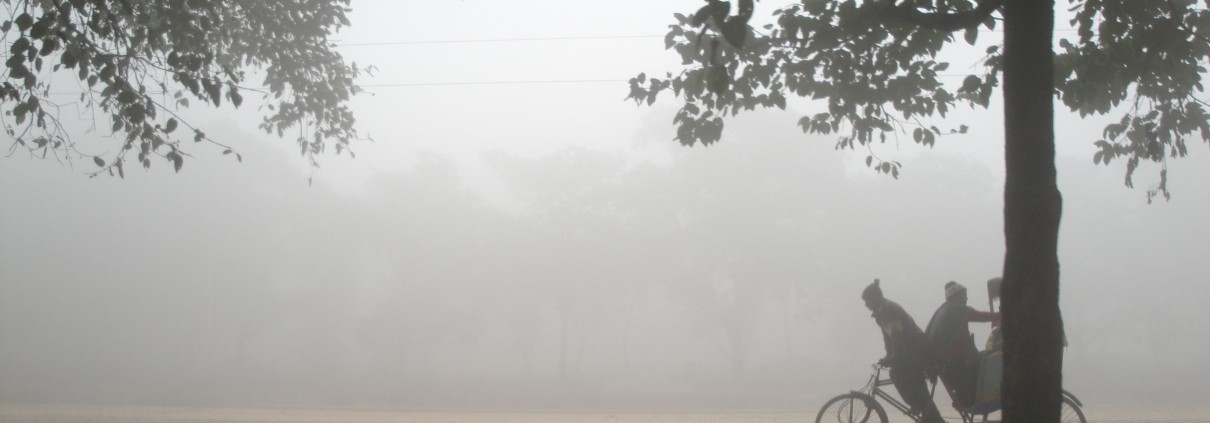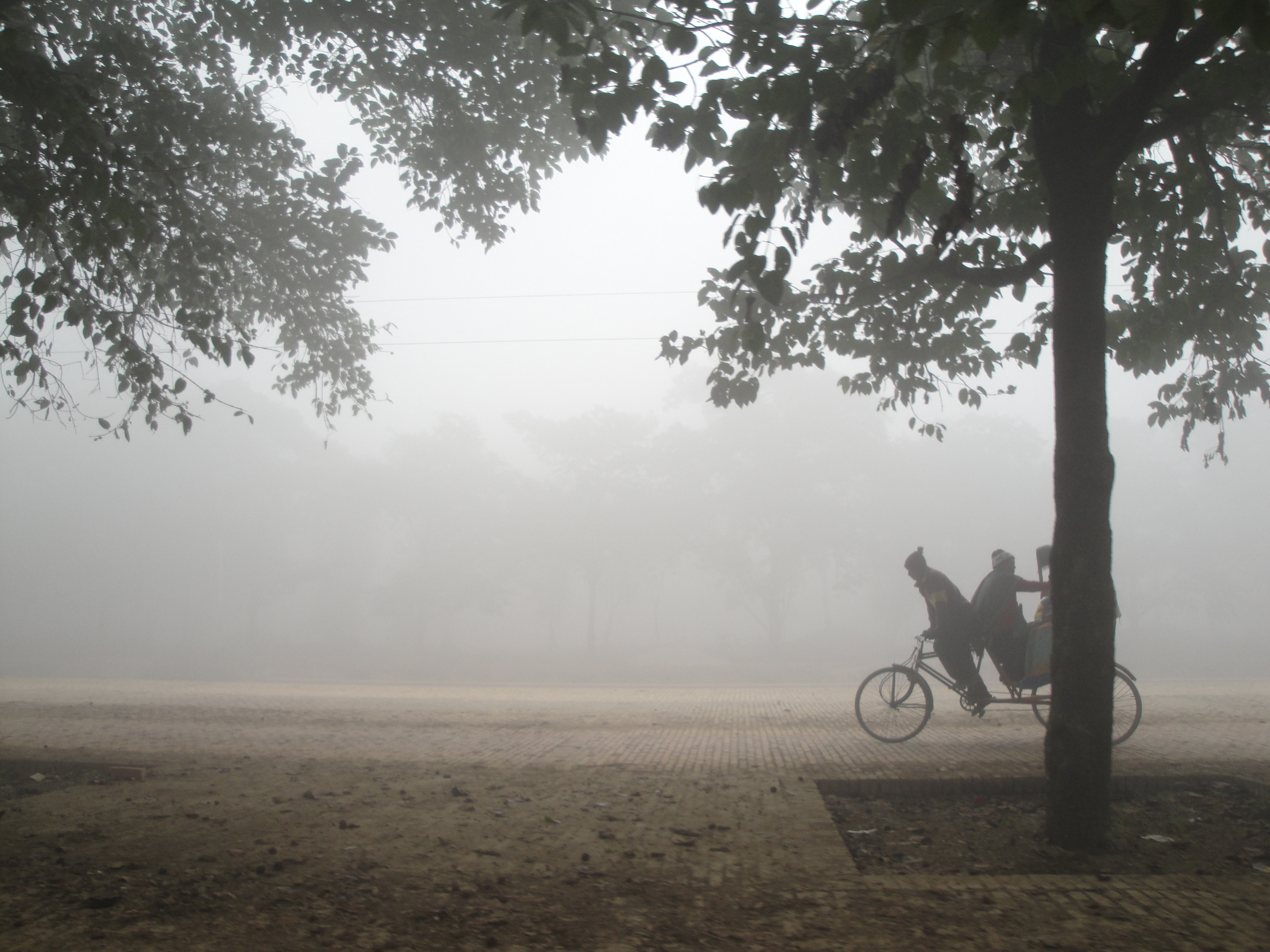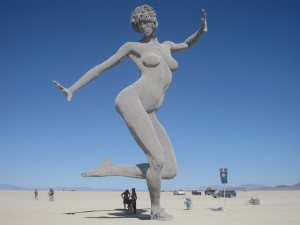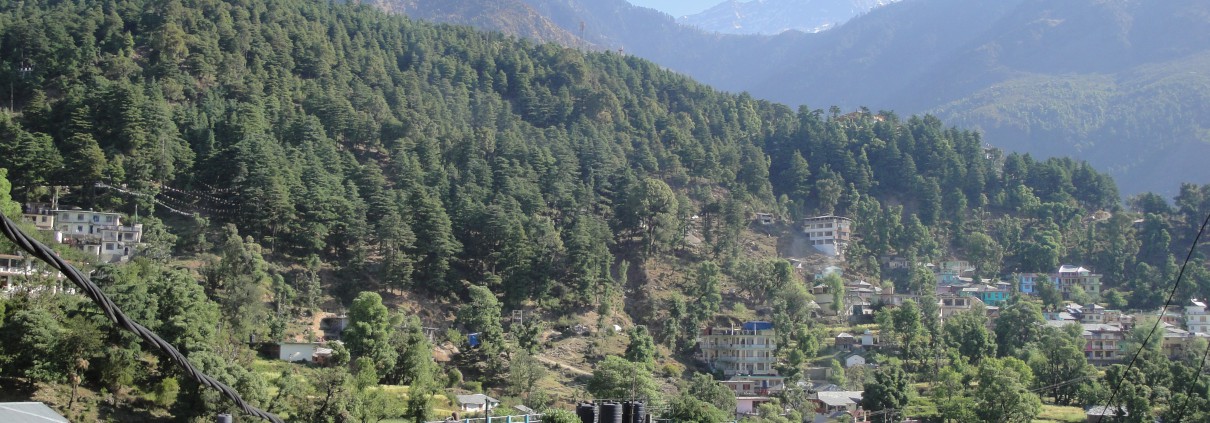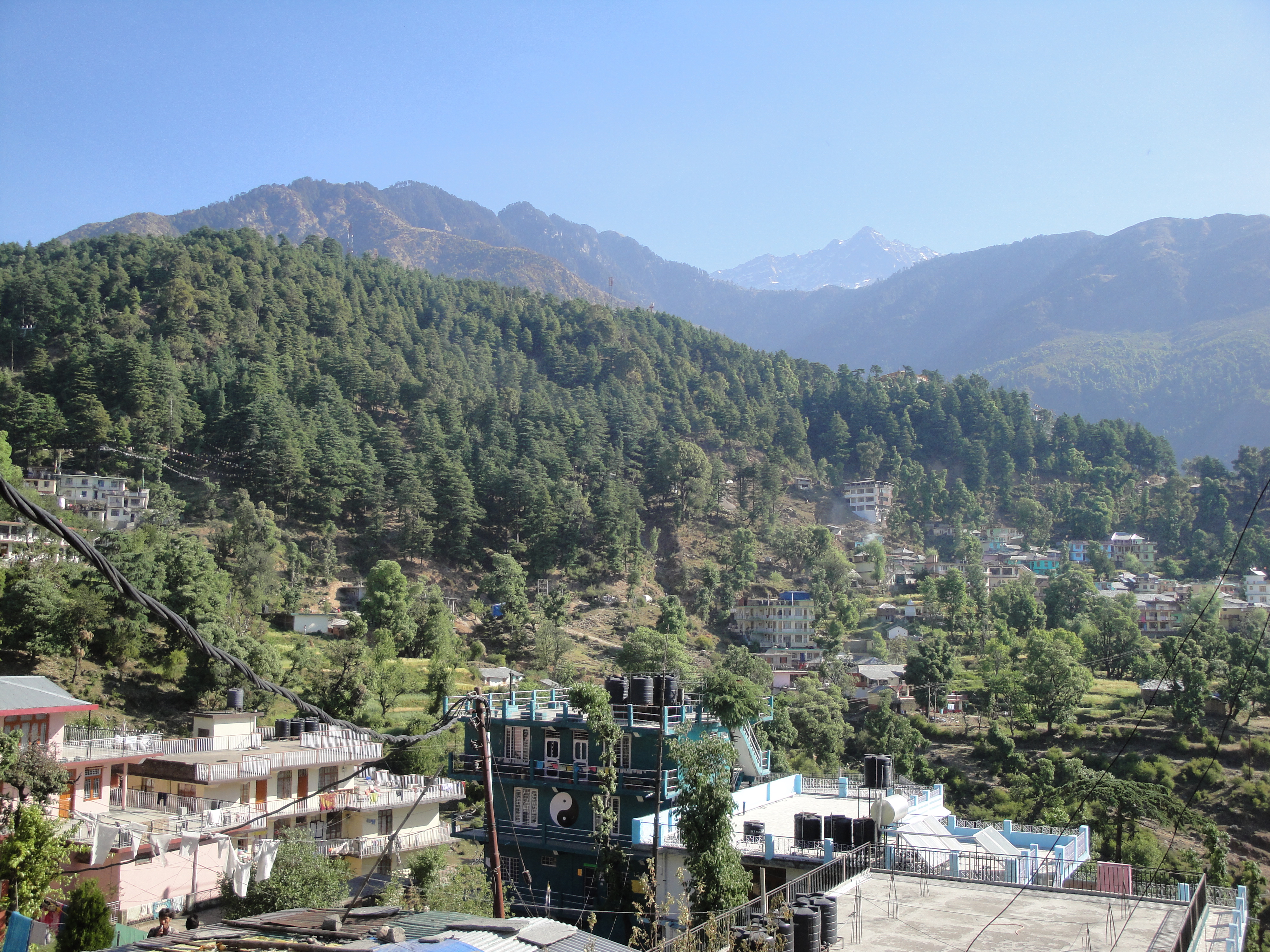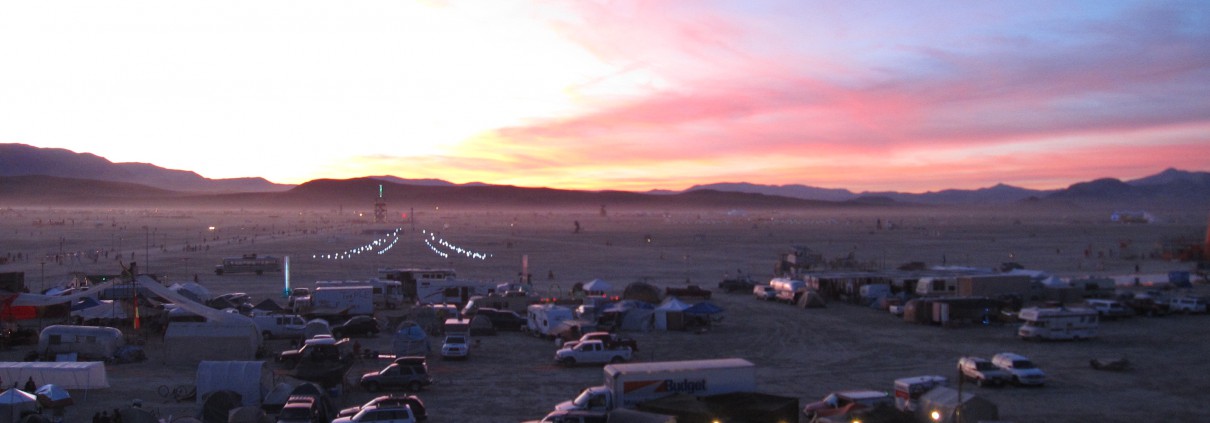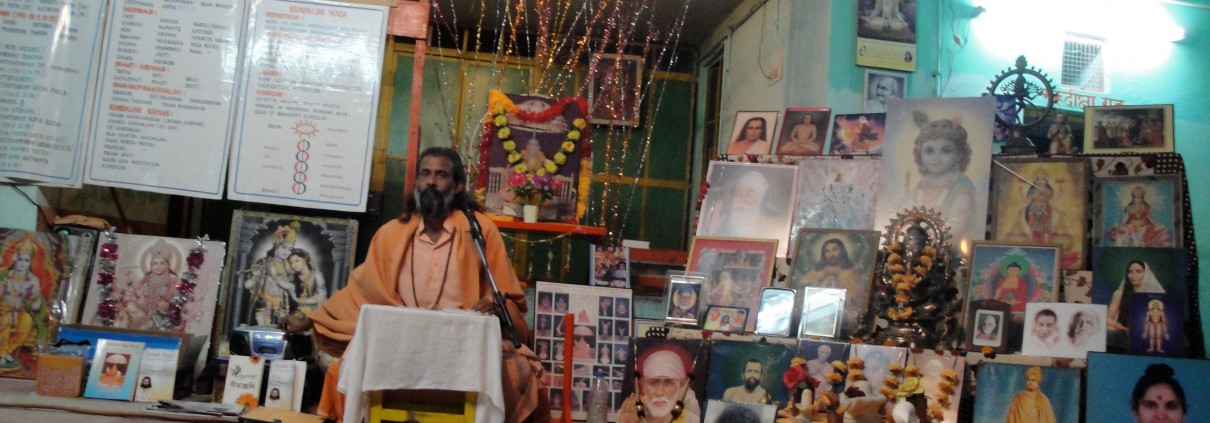From the lovely jungle backwaters of Allepey, I boarded a ferry that headed south through narrow waterways lined with palm trees and lotus flowers and green. Every tourist on board had their camera out and were snapping away as every moment was a photo opportunity.
Along the boat ride, a smiley Indian man took a liking to me. We were sharing a couple of laughs, and when I told him I had a drum he became ecstatic. This guy played tabla and began to demonstrate on my Nepali drum. When I told him I play cello he began kissing my feet in admiration, and with a big genuine smile kept saying that he was not worthy. I still don’t know what that was all about, but I liked his spirit and enjoyed his crazy companionship. I only understood about a third of what he was saying. He went away for a while, but then came up behind me and whispered in my ear, inviting me to come down below into the captain’s chamber. I thought it was strange and was a bit leary, but it seemed classically Asian and random, so I followed him.
In the captains chamber I found my smiley friend, along with the captain, and the co-captain. A couple empty bottles of rum were strewn about and the smiler quickly emptied the contents of a bottle into a glass and handed it to me. At first I protested, but then with a smile I embraced the randomness of the situation and enjoyed the delicious rum. After finishing the first glass, he poured a second and I enjoyed that one too. The more I drank the easier it was to understand this guy’s crazy mind. I soon came to understand that my smiley friend, along with the captains and crew, were all drunk as a skunk!
By the time I arrived at Amma’s ashram the universe was smiling with me and everyone was glad. Walking slowly in peaceful summer bliss, I sauntered across the bridge and entered the sprawling pink compound that is Amma’s ashram. Gentle late afternoon sunlight painted everything in soft golden hues, a light breeze was blowing, and at this moment all of this stimuli felt like a giant cosmic hug. It felt right here. This is where I needed to be right now. Love felt omnipresent and I smiled to think we were all in this place together in celebration of love, in celebration of Amma- “the hugging guru”.
Long ago Amma devoted herself to the welfare of humanity and began offering love to the destitute and all by offering hugs. She calls it “giving darshan,” and over the course of her lifetime she has hugged millions and millions of people. Hugging is her “service”, that is what she does and people loooooove this woman! Her great love has inspired the adoration of many, and today she is revered as a living saint.
An ashram is a holy place where devotees live, learn, and practice their faith. At Amma’s ashram, there are over 4,000 people who’ve been living here permanently for several years. They are from every country, including a large population of Indians. There are also many dorm rooms to accommodate the several thousand visitors who come from far and wide to experience Amma’s “darshan”. The ashram is a microcosm—a veritable city with a university, a hospital, several apartment buildings, a pool, restaurants, gift shops, laundry facilities—it’s all here. The ashram is situated on a thin strip of land with the backwater canals on one side, and the Arabian Sea on the other. At sunset, devotees gather on the beach for prayer and meditation.
The devotees who have been here for a long time wear white, and all around the busy compound you see them walking about and working with great industry. Sometimes it feels like a cult because they are slow to warm up to outsiders, segregate between men and women, and in general live a curious life of singular focus and adoration of this one woman, Amma.
Day begins at 4:50, at which time the haunting chant of several hundred women rhythmically overlaps the solemn lonesome drone of the men’s chanting. Each morning at this time I would go and sit beside the fire where morning puja is performed. Some 40 or 50 devotees are gathered around a fireplace where a Brahmin priest builds a fire and begins tossing oil, flower petals, and all sorts of ritualistic items into the fire while murmuring prayers and chanting the names of Shiva. With eyes half closed in a soft gaze, I sat there immersed in prayer while the loud enthusiastic chanting of devotees would sing me towards spiritual trance.
As the hour progressed the tone of chant rises in step. Just before six it reaches a climax– a wild surging melody as this ecstatic band of angels belts out adoration. And then at six, suddenly it’s over and in the absence of the intense chant, a mystical silence and peace pervades the ashram. White robed women and men emerge from morning birjan and suddenly flood the silent compound. Surrounded in darkness, cool morning wind is blowing through my hair as I miander around slowly in walking meditation.
At seven, there is yoga in the main hall. I join about twenty other men. Somewhere else the women do yoga. (Everything at the ashram is divided by gender.) And at nine, we all take breakfast. This is when my Seva begins. Seva is the name given to selfless service offered by devotees. Amma encourages devotees to sign up to perform tasks and do work around the ashram, and says that selfless service is the most direct path to God. I must agree–of all the activities that I did during my few days at the ashram, none were more rewarding than the three hours per day when I got to feed and serve all the hungry devotees.
Soon afterward, loud devotional music began blasting out of speakers all around the compound. Hindu rituals would commence as a prelude to another session of Amma giving darshan.
The main hall is a large open-aired canopy with concrete floors and a stage up front where Amma sits surrounded by devotees and assistants. There are two large movie screens at the front of the hall that display the live video cameras fixed upon Amma. An ocean of folding chairs are lined up in rows and at the center there is a band of Hindu musicians who sing devotional songs all day long. A never-ending river of people file in from both sides of the stage, slowly approaching Amma for a hug. Along with thousands of devotees, I sat there in meditation watching the movie screens, observing the love Amma offers uniquely to each person that would come into her arms. Sometimes it would seem like she was crying, other times smiling, and on one particular day she seemed very tired, almost pained by the strain of this emotionally taxing activity.
It’s a great love that she practices and I found myself quite moved by her selfless commitment. It’s interesting that she never proclaimed herself a saint, but by virtue of her practice and the endless love that pours forth from her, she is celebrated as a saint. You can see it in the eyes of people that approach her. To touch her is to experience a miracle. To be healed. To be made right with God. And to feel her arms wrapped around you is to know it’s gonna be alright. There is a light, and there is a path to peace.
Now, I must confess, I didn’t exactly feel that light of love or compassion in my darshan experience. For me, the process was quite tumultuous. With the typical hierarchy of pushy Indian men running the show, we were like cattle being herded frantically up onto the stage. Like drill sergeants, these uncompromising ringleaders command you this way and that way and you will obey. Just before approaching Amma you are instructed to get down on your knees where you inch forward amidst incredible commotion. When it was my turn, many hands grappled by head and placed it near Amma’s shoulder. Amma took hold of me for about 3 seconds, mumbled a Hindu prayer in my ear, and instantly I was being pushed and pulled away from the guru. It all happened so quickly, I barely had time to consider the arms of a saint wrapped around me.
Since visiting Amma I keep imagining what it would be like to go on world tour giving people hugs wherever I go. That’s a beautiful thing. I would like to do it. To be a light and give hope and love and hugs to all who need it—what could be more noble or rewarding?

